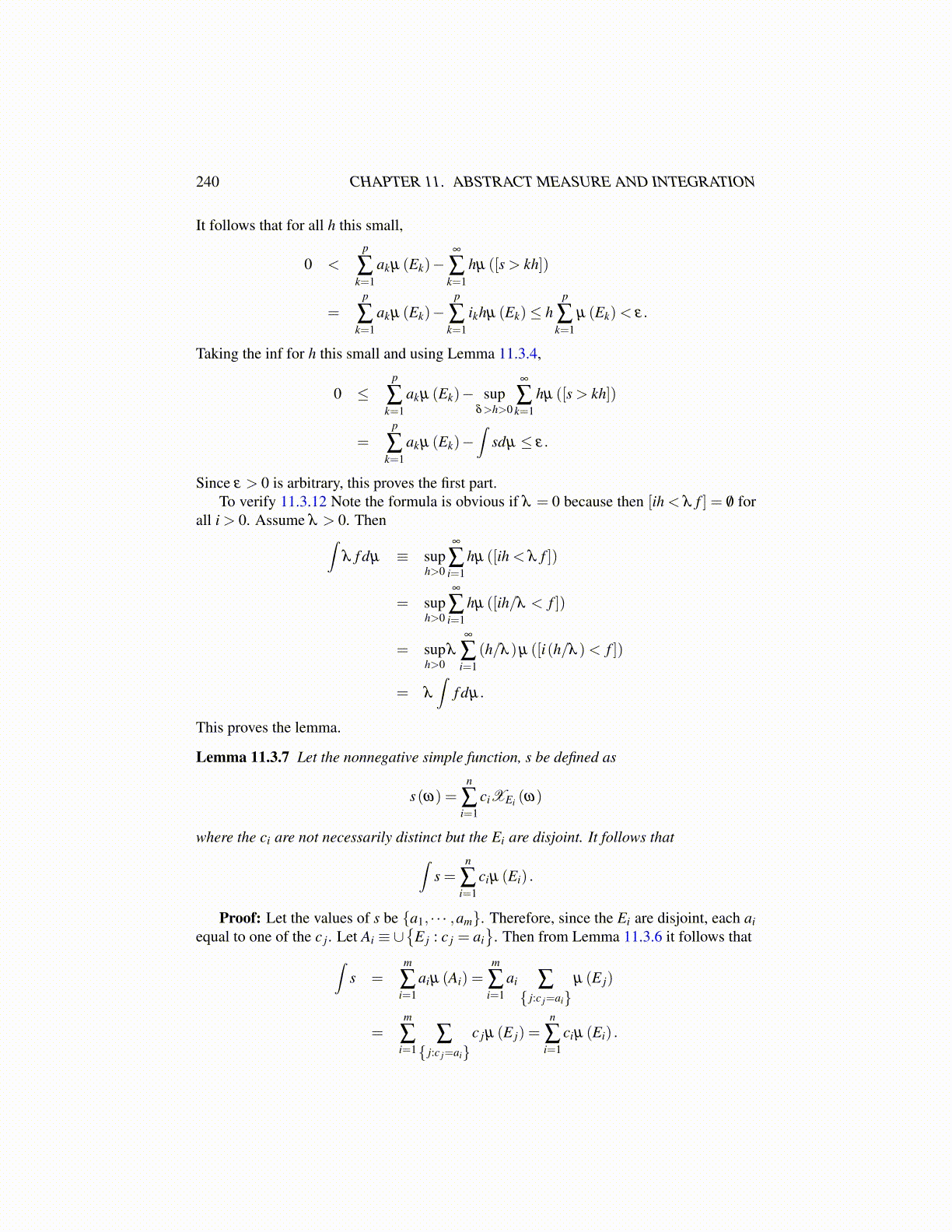
240 CHAPTER 11. ABSTRACT MEASURE AND INTEGRATION
It follows that for all h this small,
0 <p
∑k=1
akµ (Ek)−∞
∑k=1
hµ ([s > kh])
=p
∑k=1
akµ (Ek)−p
∑k=1
ikhµ (Ek)≤ hp
∑k=1
µ (Ek)< ε.
Taking the inf for h this small and using Lemma 11.3.4,
0 ≤p
∑k=1
akµ (Ek)− supδ>h>0
∞
∑k=1
hµ ([s > kh])
=p
∑k=1
akµ (Ek)−∫
sdµ ≤ ε.
Since ε > 0 is arbitrary, this proves the first part.To verify 11.3.12 Note the formula is obvious if λ = 0 because then [ih < λ f ] = /0 for
all i > 0. Assume λ > 0. Then∫λ f dµ ≡ sup
h>0
∞
∑i=1
hµ ([ih < λ f ])
= suph>0
∞
∑i=1
hµ ([ih/λ < f ])
= suph>0
λ
∞
∑i=1
(h/λ )µ ([i(h/λ )< f ])
= λ
∫f dµ.
This proves the lemma.
Lemma 11.3.7 Let the nonnegative simple function, s be defined as
s(ω) =n
∑i=1
ciXEi (ω)
where the ci are not necessarily distinct but the Ei are disjoint. It follows that∫s =
n
∑i=1
ciµ (Ei) .
Proof: Let the values of s be {a1, · · · ,am}. Therefore, since the Ei are disjoint, each aiequal to one of the c j. Let Ai ≡ ∪
{E j : c j = ai
}. Then from Lemma 11.3.6 it follows that∫
s =m
∑i=1
aiµ (Ai) =m
∑i=1
ai ∑{ j:c j=ai}
µ (E j)
=m
∑i=1
∑{ j:c j=ai}
c jµ (E j) =n
∑i=1
ciµ (Ei) .